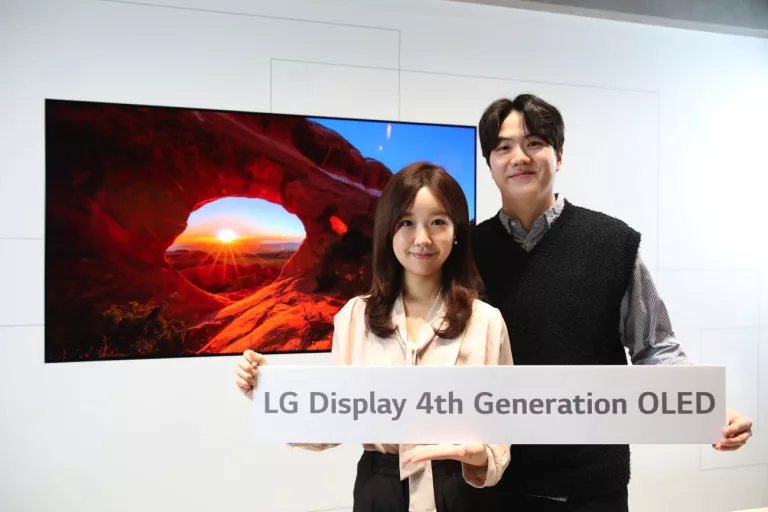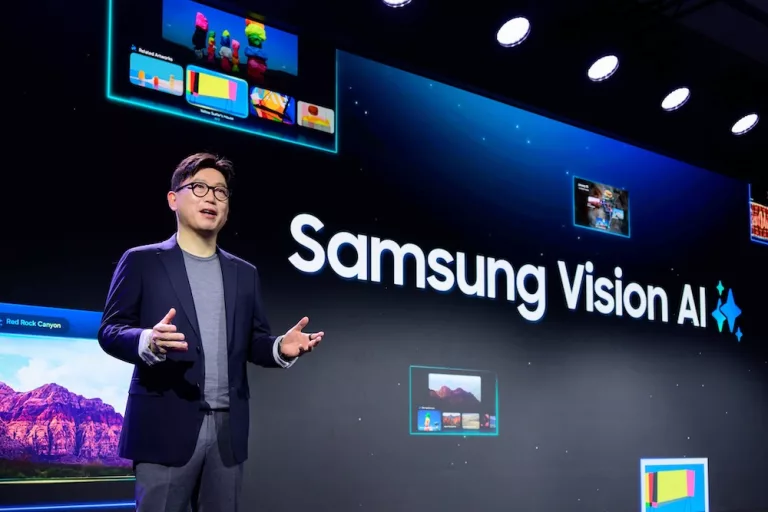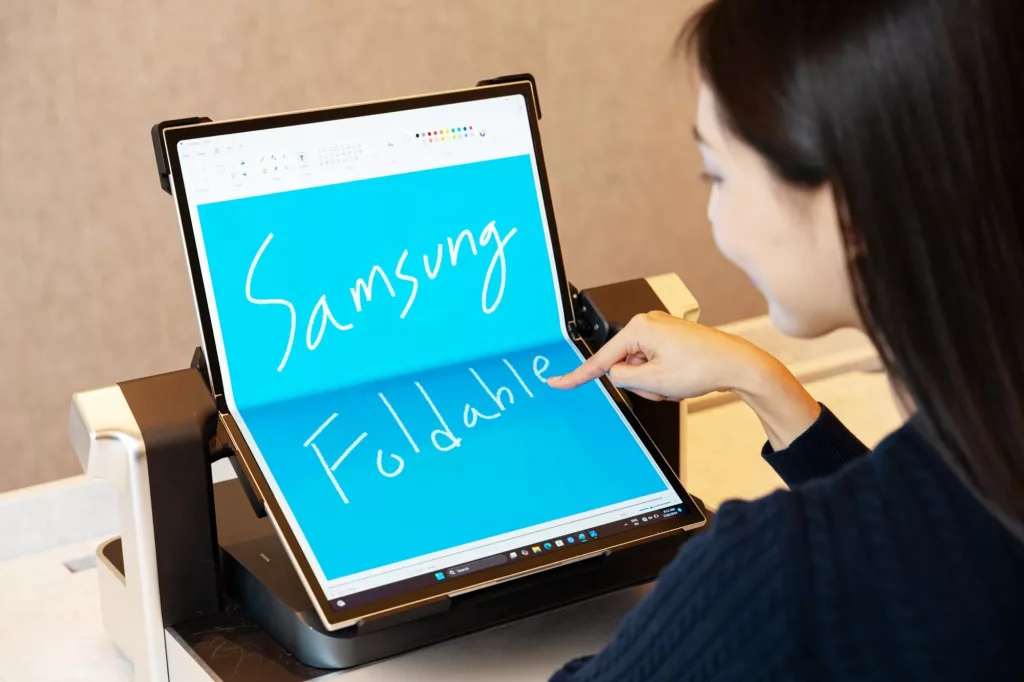Image : Samsung
For several years, OLED technology has established itself as the standard in display technology, whether for televisions, tablets, VR headsets, or other devices. Its exceptional contrast, responsiveness, thinness, and flexibility make it a top choice for manufacturers and consumers alike.
At CES 2025, major industry players like LG, Samsung, Panasonic, and Lenovo showcased significant advancements, promising not only enhanced performance but also a reduction in production costs, paving the way for more affordable prices.
Key Announcements from CES 2025
LG Display: Increased Brightness for an Optimized Experience
LG Display showcased a new OLED screen for televisions, offering a brightness of 4,000 nits, which is 33% higher than the previous generation. This improvement is based on a four-layer structure optimized to work with the new artificial intelligence technologies integrated into modern televisions.

Lenovo: A rollable OLED display for a laptop
Lenovo made a surprise announcement by unveiling the ThinkBook Plus Gen 6, the first laptop equipped with a rollable OLED display. With the press of a button, the screen can expand from 14 to 16.7 inches. It features a 120Hz refresh rate for exceptional smoothness, and its mechanism has been tested to withstand 20,000 extension cycles.

Samsung unveils a new generation of monitors combining AI, gaming, and productivity.
At CES 2025, Samsung unveiled a new range of monitors combining artificial intelligence, gaming performance, and productivity.
- The Smart Monitor M9 leverages AI to automatically optimize image quality and enhance content resolution, while featuring a sleek design and an integrated 4K camera.
- The new Odyssey OLED G8 and G6 screens are designed for demanding gamers, featuring high refresh rates and exceptional image fluidity. Samsung is also innovating with the Odyssey 3D, a display that offers a glasses-free 3D experience.
- Finally, the ViewFinity S8, designed for professionals, features an expanded format to enhance comfort and productivity, incorporating technologies that reduce eye strain and facilitate multitasking.
With this new lineup, Samsung focuses on innovation to meet the needs of gamers, creators, and professionals by combining performance, comfort, and artificial intelligence.

TCL CSOT: A New Manufacturing Method for Lower Prices
TCL CSOT has also announced a new “Inkjet Printed OLED” manufacturing process that promises cheaper OLED panels. Traditionally, OLED panels are made using an evaporation technique, which results in material loss and significant waste during production. With this new technique, the LEDs are printed using inkjet technology, reducing material waste and leading to an estimated production cost savings of 20 to 30%.
We can therefore expect displays, including those for VR headsets, to become even more realistic and immersive, with prices becoming increasingly affordable.
What to take away
- More advanced OLED displays: improved brightness, increased flexibility, and innovative designs.
- Hardware innovations: rollable, foldable, and adaptive displays for greater versatility.
- An expected price drop: thanks to more efficient manufacturing processes, making OLED more accessible.
The evolution of OLED displays promises a massive democratization of the technology in the coming years, whether for televisions, laptops, or VR headsets. CES 2025 marks a decisive milestone: display quality will soon no longer be a luxury, but a standard accessible to everyone.

